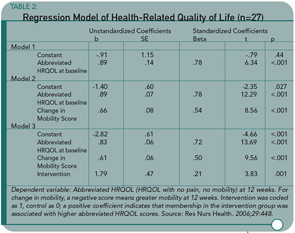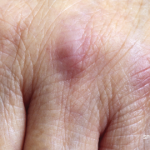This study was conducted to add to the knowledge about a modulation technique that combines guided imagery and relaxation (GIR) to improve QOL. Older adults who live with OA and chronic pain know that a variety of management methods, such as guided imagery with relaxation and exercise, are needed to modulate pain over time. Unfortunately, though, many patients have not been introduced to these approaches and how to use them effectively. It’s not unusual to hear persons say, “I don’t want to take more medicine for pain—it makes me feel worse,” when “worse” refers to such side effects as dizziness, clouded thinking, and gastrointestinal problems.
The authors acknowledge that pain and mobility are important physical HRQOL issues for older women with OA, but that HRQOL is influenced by psychological and social factors as well. Experimental and control groups were used to determine the effect of GIR on HRQOL from a comprehensive point of view. An interesting twist of this study was its attempted to determine whether an abbreviated HRQOL that didn’t include measures of pain and mobility was affected by the GIR intervention, and whether changes in pain and mobility were significantly associated with the abbreviated HRQOL score.
The total score of the AIMS2 was used as the measure of HRQOL; the pain and mobility scale scores were removed for the abbreviated HRQOL score. All 17 women (M age = 72.06 years) in the intervention group showed significant improvement on both total and abbreviated HRQOL scores, while the 10 in the control group (M age = 74.8 years) did not. This last question was addressed using a stepwise regression analysis that included three models. (See Table 2) Model 3 includes all of the significant independent variables of interest; the change in the pain score was not significant.
An encouraging and clinically useful finding of this study is that GIR provides an effective modulation method that older women with OA can use to improve their HRQOL. It is a self-management strategy that is easy to teach and easy to use. Women in this study used it twice a day. A value in initially having it prescribed a certain number of times is that practicing it successfully could lead to more frequent use. How helpful it would be if used on demand, as when pain or emotional stress increase, rather than a prescribed number of times, is a necessary follow-up question.


